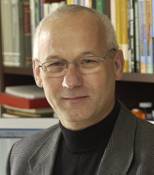Time: 3:00pm 1st Jun, 2011(Wednesday)
Location: Conference Room 440, the 3rd Academic Building, Yuquan Campus, Zhejiang University
Title: Photonic Detection of Viruses and Bacteria with III-VQuantum Semiconductor Emitters
Jan J. Dubowski
Laboratory for Quantum Semiconductors and Photon-based BioNanotechnology
Université de Sherbrooke, Sherbrooke, QC J1K 2R1, Canada
The conventional schemes for detection of viruses, bacteria, fungi and toxins include cell culture, immunological methods and molecular methods such as polymerase chain reaction. These techniques, however, require much time and expertise in both sample preparation and data analysis. Development of alternative methods of detection that would be fast, highly specific, and not requiring significant involvement of highly specialized personnel, would be advantageous for medical diagnostics, clinical analysis and/or field tests.
I will discuss a new concept of photonic biosensing that takes advantage of the strong optical emission of III-V quantum semiconductors. The transducer effect of this approach is based on measuring the perturbation of a photoluminescence (PL) signal from arrays of epitaxial quantum dots (QD) or specially designed quantum well (QW) architectures capped with a layer of material containing bait-biomolecules. The modification of semiconductor band bending near the surface and reduction of the hole/electron ratio of surface carrier capture cross-section by an electric charge of the antigen are the main mechanisms contributing to the detection. Most viruses and bacteria carry a net negative electric charge, for which an increase of the PL signal is expected upon immobilization of such particles on the surface of undoped, or lightly n-doped III-V semiconductor. In addition to a highly sensitive response, successful detection requires that the biofunctionalized architectures remain relatively stable in biological solutions used for transporting viruses or bacteria. Our theoretical calculations and experimental data point to thiolation of the GaAs surface as a practical means in achieving both biosensing functionality and stability, which are attractive for rapid detection of selected biomolecules. I will discuss the recent progress we accomplished in this respect and the perspectives of multiplexed biosensing with this photonic biosensing technology.
 Jan J. Dubowski, Full professor and a Canada Research Chair in Quantum Semiconductors at the Université de Sherbrooke Department of Electrical and Computer Engineering. He specializes in surface physics and chemistry of solids, technology of quantum semiconductors and laser-based technologies for soft-processing of materials. He coordinates an innovative research program concerning so called Quantum Dot Template technology that addresses biofunctionalization of surfaces of III-V quantum semiconductors, studying optical phenomena of these material systems and the development of integrated devices for photonic detection of microbial pathogens. He has published over 150 research papers, reviews, book chapters and conference proceedings, and he is a holder of 4 international patents. Dr. Dubowski is a Fellow of SPIE - the International Society for Optical Engineering and he is a member of the American Physical Society and the Canadian Association of Physicists.
Jan J. Dubowski, Full professor and a Canada Research Chair in Quantum Semiconductors at the Université de Sherbrooke Department of Electrical and Computer Engineering. He specializes in surface physics and chemistry of solids, technology of quantum semiconductors and laser-based technologies for soft-processing of materials. He coordinates an innovative research program concerning so called Quantum Dot Template technology that addresses biofunctionalization of surfaces of III-V quantum semiconductors, studying optical phenomena of these material systems and the development of integrated devices for photonic detection of microbial pathogens. He has published over 150 research papers, reviews, book chapters and conference proceedings, and he is a holder of 4 international patents. Dr. Dubowski is a Fellow of SPIE - the International Society for Optical Engineering and he is a member of the American Physical Society and the Canadian Association of Physicists.
